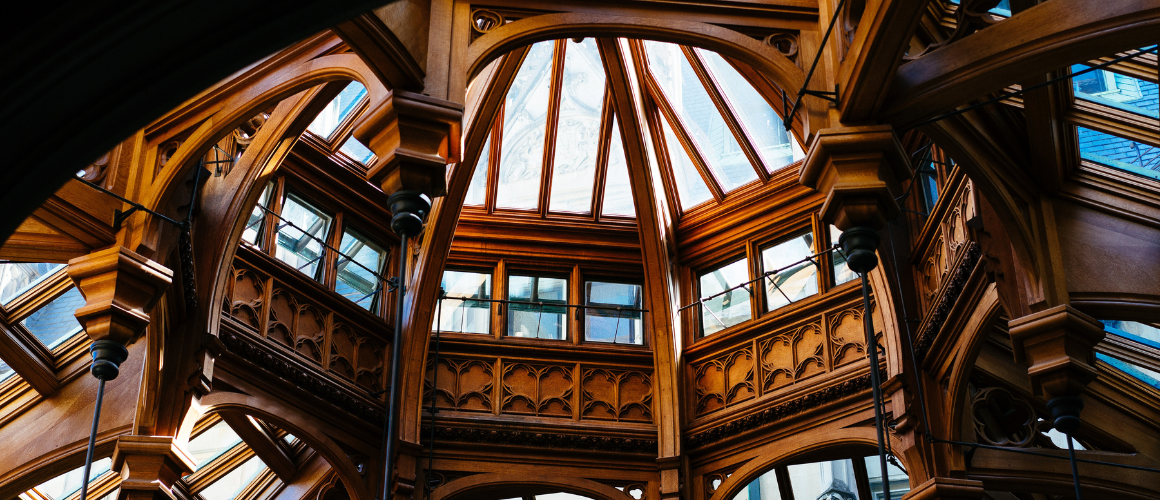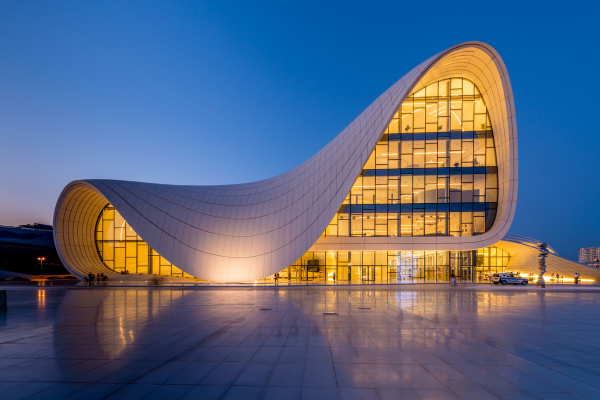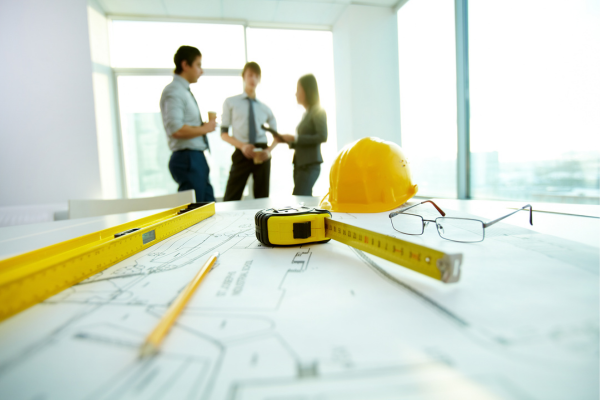
From Stone to Smart: Technology’s Evolution in Architecture
Architecture is much more than just buildings and structures. It's a story of us, how we live, and what we dream about. Imagine walking through a city, each building whispering tales of the past, present, and hints of the future. This blog takes you on a journey to uncover these stories. We'll dive deep into architecture's roots, tied to ancient myths, reflecting our society's heartbeat, and shaping our tomorrow. We'll see how buildings do more than provide shelter—they inspire, challenge, and heal us. It's about understanding the magic behind the concrete and glass, the silent language of spaces that shapes our lives. So, let's start this exploration together, discovering the raw essence of architecture and why it means so much more than we might think. Welcome to a journey into the heart of our built world.
Long ago, people built not just to shelter themselves but to reflect their deepest beliefs and connect with the cosmos. Ancient architecture was more than walls and roofs; it was a bridge between earth and sky, humans and gods. Think of the pyramids in Egypt, grand and precise, aligning with the stars. Or the Greek temples, where every column and sculpture spoke of heroism and harmony.
In those times, buildings told the stories of heroes, gods, and the mysteries of life. They were built to last, to awe, and to teach future generations. It wasn't just about making a space for people to live or worship; it was about creating a symbol, a marker of civilization and human achievement.
This wisdom from the past teaches us something vital even today. Architecture has the power to reflect our values, our dreams, and our society's soul. As we explore ancient ruins or stand before historical buildings, we're not just seeing old stones. We're witnessing the pillars of human thought, effort, and spirituality.
These ancient structures remind us that architecture is more than a technical skill; it's an art form that binds communities, cultures, and generations. They show us how buildings can speak to our hearts, challenge our minds, and inspire our spirits. As we move forward, these lessons from the past can guide us in creating spaces that honor both our heritage and our future hopes.
So, as we journey into the essence of architecture, let's carry with us the wisdom of the ancients. Let's remember that every brick and beam can tell a story, every design can reflect a dream, and every building can be a bridge to something greater than ourselves.
Buildings are like mirrors. They reflect what we are as a society at any given time. Think about it: from the skyscrapers touching the sky to the cozy homes on suburban streets, each structure tells a part of our collective story. They show what we value, how we live, and even our dreams for the future.

For example, today's push for green buildings and sustainable designs tells us about our growing concern for the environment. It shows we're thinking about tomorrow, not just today. These eco-friendly spaces are more than just places to work or live; they're a sign we're trying to do better by our planet.
But it's not just about the environment. Architecture also reflects our social changes. Spaces are becoming more inclusive, designed for everyone to access and enjoy. Public places that bring communities together, from parks to libraries, speak of our need for connection and community.
Then there are homes. From big houses to tiny apartments, they tell stories of families, of individuals making their way in the world. They show us what "home" means to us now, which can be very different from what it meant in the past.
In times of hardship, architecture has shown resilience and hope. Rebuilding efforts after disasters, for example, not only restore physical structures but also people's spirits. They're a testament to our ability to come back stronger, together.
So, as we look at the buildings around us, let's see them for what they really are: a mirror to our society. They reflect our past, shape our present, and hint at our future. As we change, so will the face of our cities and towns, continuously shaping the narrative of who we are and where we're heading.

Imagine a world where buildings heal the environment, homes adjust to our moods, and cities grow smarter every day. This future is already taking shape, thanks to technology. Innovations are pushing architecture into realms once thought impossible, making our spaces more sustainable, responsive, and in tune with nature.
Take 3D printing, for example. It's not just for small gadgets anymore. Entire homes can now be printed, reducing waste and speeding up construction. This technology allows for complex, efficient designs that fit perfectly into their surroundings, making each building a unique piece of art.
Then there's artificial intelligence (AI). It's transforming how architects design, allowing them to simulate and test how buildings will withstand time and the elements. AI can predict the needs of a city's population, leading to smarter urban planning that anticipates growth and change.
Sustainability is another area where technology shines. Solar panels integrated into windows, roofs that collect rainwater, and walls that breathe are no longer science fiction. These innovations help buildings produce energy, save water, and create healthier spaces for us to live and work.
But it's not all about the new. Technology also helps us preserve the past. Digital modeling and virtual reality (VR) can recreate ancient sites or predict how changes will affect historical buildings. This blend of old and new ensures our heritage isn't lost as we build for the future.
As we look ahead, technology promises more than just smarter buildings. It offers a vision of architecture that cares for the planet, responds to our needs, and keeps us connected to our history. The future of architecture isn't just about the structures we create; it's about building a better world.
Ever walked into a room and instantly felt better? That's the human experience in architecture. It's about creating spaces that make us feel safe, inspired, or even curious. Think about how a cozy room can calm us down or how a bright, open space can lift our spirits. It's all by design.
Architecture affects us on a deep level. From the colors on the walls to the way light filters through a window, every detail can influence our mood and well-being. Designers think about these things, crafting spaces that aren't just beautiful but also beneficial to our mental health.
Schools with big windows and lots of natural light can help students learn better. Hospitals designed with patients' views and comfort in mind can actually speed up recovery. Even offices are changing, with layouts that encourage movement and interaction to boost creativity and happiness at work.
It's not just about the physical space, though. It's about connection. Spaces that bring people together, like parks or community centers, build stronger communities. They're places where we share stories, celebrate, and support each other.
So, next time you step into a building, think about how it makes you feel. That's the human experience at work, shaping our lives in subtle but powerful ways. It's a reminder that architecture isn't just about structures; it's about us, our health, and our happiness.
As we look to the future, architecture holds the key to more than just the skyline. It's about envisioning a world where every building and space makes life better, for the planet and for us. We're stepping into an era where our homes, workplaces, and public spaces not only look good but do good—conserving energy, bringing communities together, and enhancing well-being. The future of architecture is not just in the materials we use or the technologies we employ but in how we think about space itself. It's an exciting journey ahead, where every structure contributes to a sustainable, connected, and happier world. Let's build that future together.